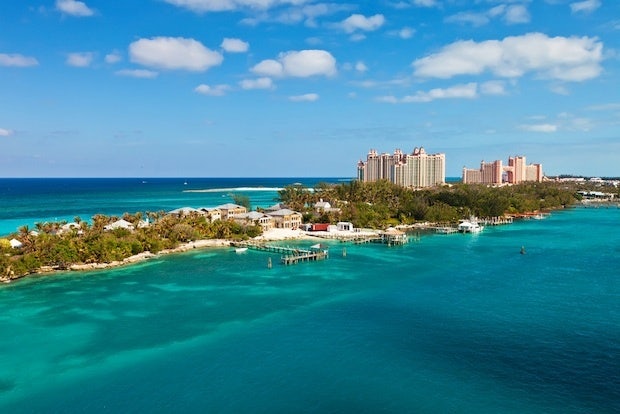
Paradise Island in Nassau, The Bahamas. (Shutterstock)
Beautiful beach locations are often prime destinations for the world’s tourists, and Chinese travelers are no different. As a rapidly growing number of Chinese tourists head abroad, tropical locations across the world are touting their sandy shores to Chinese visitors. Look below to see how some of the main locales known for being tropical getaways for Chinese tourists are faring against their competition.
The Bahamas#
In December 2013, The Bahamas and China signed a Mutual Visa Exemption Agreement in hopes that saving a trip to the consulate may make more Chinese travelers consider the tropical chain of islands for their next beach vacation. “With this agreement, The Bahamas will join North America, Europe and Australia as one of the top destinations for over 70 million Chinese tourists who frequently travel internationally,” The Bahamas’ Foreign Affairs and Immigration Minister Fred Mitchell said of the agreement.
Hawaii#
Long a stronghold for Japanese tourists, Hawaii’s convenient Pacific Rim location is becoming increasingly attractive to throngs of Chinese visitors as well. In October 2013, luxury lifestyle concierge company Affinity China teamed up with American Express to host Chinese VIPs as part of a promotion of Hawaii as a location for Chinese visitors, which is being augmented by the partners’ new Chinese-language 17Hawaii site.
Maldives#
A longtime beach getaway spot for wealthy Chinese tourists, the Maldives have benefited from more direct flights from China and organic social media promotion by younger Chinese travelers. As a result, in 2011, China became the number one source of tourists for the tropical island chain. While the Maldives have frequently been embroiled in political unrest that deterred tourists, it managed to bounce back in 2013 with a huge jump in arrivals from China.
Thailand
Another tourist-centered beach-heavy locale that became engulfed in political strife is Thailand, which saw massive drops in numbers of Chinese visitors as a result of its ongoing protests, which have erupted in violence. The country relies heavily on tourist revenue, and had previously seen a boost in Chinese visitor numbers thanks to the blockbuster Chinese film Lost in Thailand. According to a recent Wall Street Journal interview Credit Suisse analyst Santitarn Sathirathai, Chinese tourists are likely to opt for other Southeast Asian locations as a result.
Bali
As a result of Thailand’s troubles, many Chinese tourists opted for Southeast Asian neighbor Bali for Chinese New Year, where Chinese travelers are the second-largest group of visitors. Recently, Bali’s tourism board has stepped up efforts to offset its reliance on English-language marketing by creating more Mandarin-language marketing materials and offering services such as Mandarin-speaking tour guides. Since 2001, Bali has offered visas on arrival for Chinese nationals, and Jakarta and Kuala Lumpur have flight links to many mainland China travel hubs. Luxury hoteliers in Bali are also getting on the trend—luxury jeweler Bulgari heavily promoted the marriage of Tiny Times star Yang Mi at its Bali hotel this January.